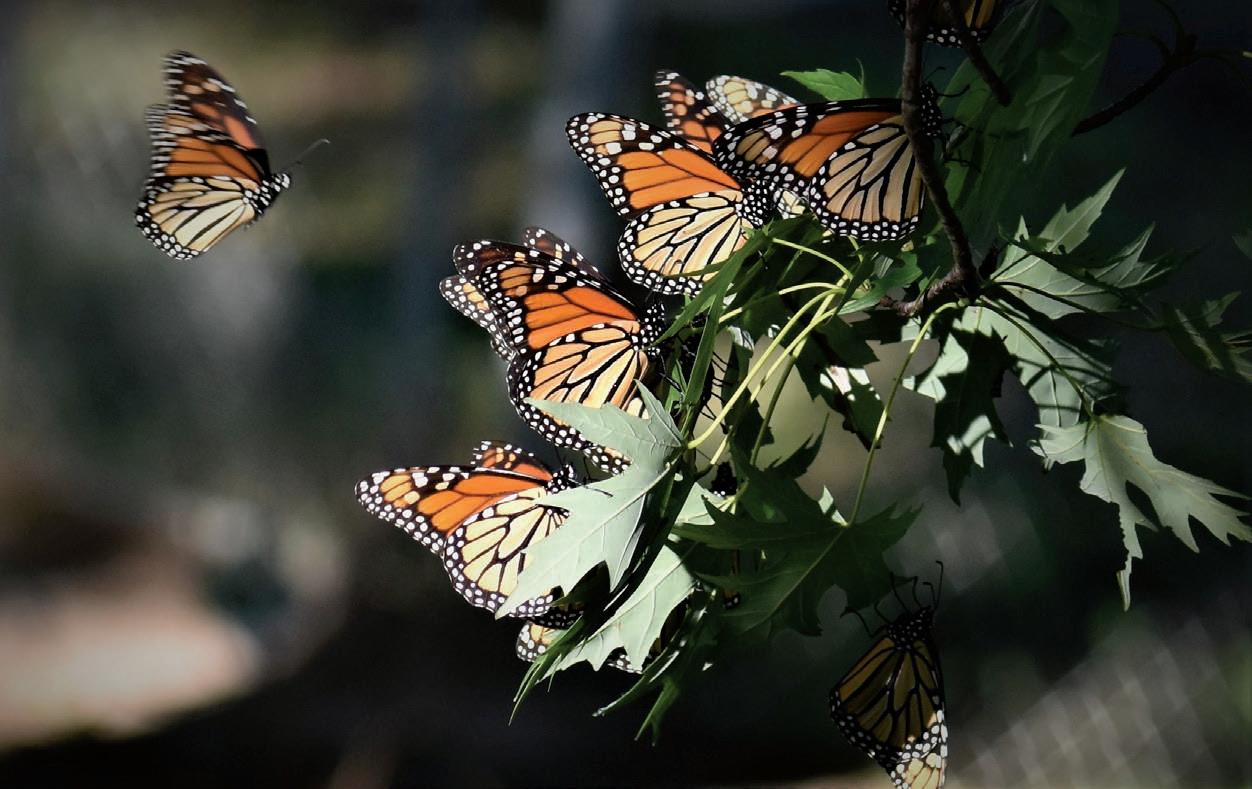
6 minute read
Vet Connect
By Kim VanWagner, D.V.M.
Holiday Emotional Experiences
Everyone focuses on being thankful or having gratitude during this season, but there are other common emotions we experience as we approach the upcoming holidays. Stress, fear, and anxiety are some other feelings we experience during this time. Pet owners can take advantage of having that human-animal bond to help share and calm the mix of emotions that holidays can bring.
Other than the common notion of being grateful and sharing thankfulness, stress is the second most common emotion faced. The feeling that we’re going to lose control cultivates stress and fear. Most wisdom traditions tell us that nothing is within our control in the first place, so letting go of the idea that everything will be perfect is the first step. On a more practical level, be as organized as possible and tackle tasks ahead of time. Do not wait until the last minute. For example, if you know you are going to be traveling, make sure your pets are caught up on their wellness visits and vaccinations in case the need arises for boarding care. Go ahead and make that boarding reservation or get that pet sitter lined out for the holidays. The holidays can really ramp up the stress levels. The holidays and what they bring on top of our regular lives can lead us to feeling overwhelmed. Stress spins our gears wildly, wasting our much-needed energy and focus. Pets can even sense the added stress and may start showing physical symptoms of stress themselves, such as gastrointestinal, urinary, and behavioral issues. Taking the time to stop, take a few deep breaths, and bring yourself back into your body, into the present, can interrupt the cycle of stress and help you to refocus on what’s important. Make sure to take the time to walk the dog, play with your pets, or just sit and have a calming petting or cuddling session. These activities have been proven to lower blood pressure and calm our nerves. There are many ways to support your pet during these stressful seasons with supplements, food, and medications. Contact your local vet ahead of time if you think these things might be an issue.
Science tells us unpleasant experiences carve deeper neurological grooves in our brains. In other words, as humans, we’re programmed to remember the less pleasant events, so it’s especially important to also notice when we’re happy. So often we remember our failures, our mistakes, but most of the time things really work out. When pleasant things do happen, let them sink in deeply and really register them. When you’re feeling happy, pay attention! This positive feeling gives us a sense of abundance, which in turn helps us to be more generous, which then makes us feel happier. Happiness is gold. It’s the secret ingredient! Don’t let successes pass unnoticed.
Finally, gratitude, true gratitude, is not something we can force or feel obligated to experience. True gratitude rises naturally when we’re confronted with the ways in which we are supported and provided for. Thanksgiving can be kind of tricky: We’re supposed to feel grateful, which can sometimes make us feel guilty, or crabby, or highlight all the ways that we aren’t feeling it. Still, recognizing what is abundant in your life and bringing that to the forefront is always worthwhile, no matter the season or circumstance. Allow the gratitude to flow forward and let it inform your thoughts and actions. Share this sense of abundance at every opportunity! If Thanksgiving isn’t such a great deal for you, if you’re not in a place to feel the gratitude, look for ways, no matter how small or ordinary, in which you’re supported and provided for. Focus on that, and let it guide you towards some sense of belonging.
Happiness and blessings to your families during these holidays.
Got a Cute Grandkid? Share with us!
Go to PostcardsLive.com
click on "Share Pics & More" Tab and share the cuteness!
MONARCHS ARE ON THE MOVE
By Cheryl Conley
The most amazing event happens at this time every year. It’s the migration of monarch butterflies. There are two populations of monarchs in the United States. One is the Eastern North American population that migrates to Mexico. The other is the Western North American population that overwinters in California, along the Pacific coast near Santa Cruz and San Diego. Migration takes eight to ten weeks and, depending on the starting point, some butterflies travel over 3,000 miles. Can you imagine this delicate insect traveling through high winds, rain, hail, and heavily traveled roads to reach its destination?
The Eastern North American population of monarch butterflies are of special interest to those of us in Texas. The monarchs fly south using several flyways. When they reach central Texas, they merge into a single flyway until they reach their overwintering grounds in the Oyamel forests in Central Mexico. The forests provide an almost ideal microclimate, with temperatures ranging from 32 degrees to 59 degrees Fahrenheit. At night, in order to stay warm, the butterflies cluster together. It’s not uncommon to have thousands of butterflies in one tree.
How do they know where to go? Scientists believe they use the position of the sun as well as an internal magnetic compass that directs them south towards the equator. As they near their final destination, they are able to smell and pickup on social cues to guide them. So, what happens when they reach Mexico? They hibernate until February and March. After hibernation, they find a mate, quickly get down to business, and then start heading back up north. They stop many times along the way to lay eggs in milkweed plants. After enduring a long migration south, hibernation, traveling north in the spring and laying eggs along the way, this generation of monarchs dies. These butterflies are considered the fourth generation of monarchs per year. The first generation happens between March and April when the eggs from the last generation hatch into caterpillars and then become butterflies. They start their journey north to find food. Their lifespan is 2 to 6 weeks. The second generation is born in May and June and they travel north as well. Their lifespan is 2 to 6 weeks. The third generation is born from July to August and they journey north to their final destination. They lay eggs along the way and those hatched eggs become the final generation of the year. Lifespan is 2 to 6 weeks. The fourth generation is born from September to October. This is the only generation that doesn’t die in 2 to 6 weeks. This is the group that migrates south. This generation always returns to the same trees as the fourth generation before them. No one really understands how they do this. Monarchs are indeed amazing, but in recent years, fewer and fewer butterflies have been returning from their migration to Mexico. This is due to habitat loss and extreme weather conditions. Here are some things you can do to help save the Monarchs. • Plant native milkweed. Local nurseries usually stock these plants. • Other plants to purchase are the butterfly bush, cosmos flower, lantana, lilac and zinnia. • Create a Monarch way-station. For more information, check out this link: https://www.monarchwatch.org/waystations/

GOT PESTS? CALL THE EXPERTS!
We serve Conroe, Willis, Montgomery & surrounding areas! Household Pests • Rodent Control Mosquito Control Roaches • Ants • Spiders Termite Control & Inspection






